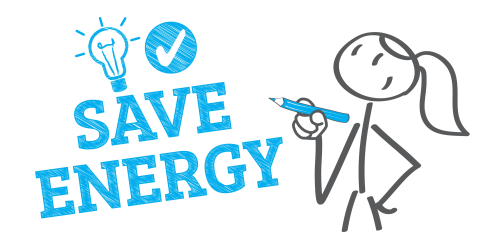
Energy Saving Tips from Manitoba Hydro


Tips to Save Energy
Learning extra tips on how to save energy in the home can save you energy and money, too! The more energy you save, the less money your hydro bill will be. There are different areas of your home where you can save money as early as today and make it a part of your daily routine. These easy tips will help save energy, money, and water.
Some of the tips in this article will focus on the small changes in the routines you maintain in your home, making you more aware of how energy is used.
These areas include:
- Heating and Cooling
- Water Heating
- Lighting
- Appliances
- Electronics
- Laundry
1. Heating and Cooling
- Inspect for any air leaks in the home. Inspect the windows, doors, gaskets, and electrical outlets for air leaks and apply new weatherstripping to the affected areas.
- Changing your furnace filter quarterly over the year and scheduling regular maintenance of your heating and cooling appliances will keep them in top condition.
- Installing a Smart Thermostat can help save on lighting costs. Some smart thermostats can learn the behaviours of the live-in occupants; once it does, they can create an automatic atmosphere. Turning the lights down at night or when you're gone for a few hours can help save you money and use less energy.
- Turn the heat down and close the heater vents in the rooms no one goes in or occupies at that moment.
- If you have a wood stove, ask an expert how to seal air leaks or reduce heat loss.
- In the wintertime, use the sun's rays to help warm your home; in the summertime, keep your blinds and curtains closed to keep the cool in.
- Keep the air ducts clean for quality air circulation.
- Installing timers for your exhaust fans will use less energy by not over-ventilating your home.
2. Water Heating
- If you leave your home for a specific time, like a vacation, set the water heater and natural gas to 'Vacation Mode,' which will minimize wear and tear.
- Nearly 20% of your home's energy consumption comes from water heating. Installing a Drain Water Heat Recovery System saves up to 25% of water heating.
3. Lighting
- Turn off the lights in rooms, that are not in use.
- Open the shades/curtains for natural light and warmth during sunny days.
- Installing LED light bulbs can help save you up to 80% of electricity and lasts longer than an incandescent light bulb.
- Lighting controls like dimmers, motion sensors, and timers can help save more energy, too.
4. Electronics
- 'Stand-by Power' or 'Phantom Power' is when appliances and electronics are still plugged in but not in use. This can cost up to 10% of electricity not being used.
- Unplug chargers when unused; they can use up to 50% of electricity as heat.
- Investing in a 'Smart Power bar' can reduce or eliminate stand-by or phantom power.'
- If you use a desktop computer, turn it off when not in use. Screen savers can also use quite a bit of energy; for most savings, always turn off the computer when not in use.
5. Appliances
- Using an air fryer, slow cooker, or microwave can use less energy while cooking a meal than the oven or stove.
- Unplug, then clean the coils of the back of the refrigerator to maintain and extend the compressor's life.
- If you are considering buying a freezer, the top-loading kind is up to 30% more efficient than the front-loading kind.
- Air drying the dishes from the dishwasher load will also help save energy.
6. Laundry
- Using the cold-water cycle to wash your laundry along with a cold-water laundry detergent will help with the cost of heating the water. Always using a whole load of laundry in each pack will help you not waste any space or water.
- Shaking your laundry before putting it in the dryer will help dry the clothes faster. Cleaning the dryer filter before each use will circulate the air and dry the clothes quickly.
- If you have a clothesline, you can save up to 100% on energy costs by drying your clothes on the clothesline.
Making these small changes in your everyday routine and using Energy Star-certified products can help you save more money and energy.

By: Tricia Cook, Content Navigator